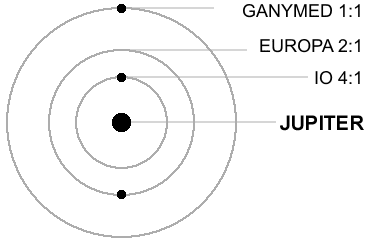With the possible exception of the very first of these juveniles (Rocket Ship Galileo), the two from 1956 and 1957 were the novels I was least familiar with. Other than looking up the titles on the internet prior to purchasing copies to begin this project, I believe that I was unacquainted with either of these. It was not obvious to me from the title that the "time" aspect of Time for the Stars would mean Heinlein would be playing around with the passage of time, something I'd seen him do in books like The Door into Summer and Time Enough for Love. Fortunately, Heinlein is a master at playing around with time in storytelling, so it was a pleasant surprise to see that done in one of these books.
This books is only a time travel story in the relativistic sense. There's no "time machine" involved. It's Paul Langevin's twin paradox told as a science fiction story. The story is so much of a nod to "Rip Van Winkle" that Heinlein even mentions newspaper headlines referring to the surviving crewmembers returning from the voyage as "another load of Rip Van Winkles."
A notorious feature of Heinlein's work I haven't really touched on in these reviews, and which I was actually kind of expecting not to, is his proclivity to normalize sexual arrangements in his fiction that would be highly unusual or scandalous in the real world. I'd seen a slight hint of this in The Star Beast when Betty was the one who proposed marriage to John, but I guess I'm still not too sure how strange a female-initiated marriage proposal was or wasn't in 1954. I think that it was abnormal but socially acceptable? Not sure. Well, this book has the main character marry his twin brother's great-great-granddaughter. While that's tame compared to some of Heinlein's later fiction, I'd think that it would have maybe been shocking to audiences in 1956, but perhaps that assumption is wrong. Obviously Scribner's kept publishing Heinlein juveniles after this one, so apparently they weren't offended.
The writing here is solid and the character development is as interesting as it is in any of the other books in the series. The ships and planets were cool and the descriptions of the struggles with instant-speed telepathy while confronting time dilation wonderfully imaginative. But my favorite part of this whole book was seeing Tom and the other "Rip Van Winkles" return to Earth and deal with the culture shock of having been out in space for the past four years and returning home with seventy-one years having passed in their absence. I've seen other science fiction stories do the whole "Rip Van Winkle" thing before, but they usually have the guy who goes to the future be some contemporary dude, as Asimov did with Pebble in the Sky. It was refreshing to see this device used not as a trope, but with what really starts as a character in a science fiction story and keeps being one all the way through.
I say that my favorite part is the part after Tom's ship returns to Earth. Well, there's the rub: that part of the book is deplorably brief. Heinlein spent so much time with psychological drama and Tom's trials and tribulations as a crewmember aboard the ship that by the time we get to the really interesting part, we're almost out of book. I described Heinlein as a master of playing around with time in storytelling, and I stand by that. In this case, ironically enough, he manages the time devoted to each plot point rather poorly. The stuff about Tom communicating with Pat while Pat is undergoing surgery for his injury just isn't that interesting. There are parts of Time for the Stars that I really like, but overall, I found this to be one of the weakest books in the series overall.
There's not much in the way of Wikipedia "Critical Reception" on this one.
Galaxy reviewer Floyd C. Gale praised the novel as "an engrossing yarn", saying "The plot twists will take you by surprise and the characterizations delight you.
That's true enough. I hope I don't imply that I disliked this one. I do like it, just not quite as much as most of the other juveniles. In comparing all of them, one of them does have to be in last place after all. For me, that's still Farmer in the Sky. But next-to-last is a contest between this one and Rocket Ship Galileo.
I've already started Citizen of the Galaxy and I'm mildly surprised at the difference in tone. For no reason other than that these two stories were bundled together in the same volume, I mentally associated them with each other. Looks like that will probably seem a bit silly, but that's a topic for my next post.

